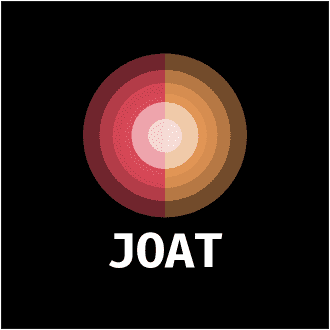Most professionals considering overseas jobs as Product Owners in the USA grapple with the complexities of the H-1B visa process. While these roles can offer attractive financial incentives and the chance to work in a dynamic market, the visa application hurdles can be daunting. This post will guide you through the benefits and challenges of pursuing such opportunities, helping you to evaluate whether the rewards outweigh the risks involved in navigating the H-1B visa landscape.
Key Takeaways:
- High Demand: The need for skilled Product Owners in the USA is significant, creating opportunities for overseas candidates despite visa challenges.
- Competitive Salaries: Positions for Product Owners often come with lucrative compensation packages, which can justify the hassle of navigating the H-1B visa process.
- Networking Opportunities: Working in the USA can enhance professional connections and career growth, providing international candidates with valuable exposure to industry standards and practices.
Understanding the H-1B Visa Process
The H-1B visa process is a complex framework designed for U.S. employers to temporarily employ foreign workers in specialty occupations. You must navigate various requirements and procedures to successfully secure this visa. Understanding the ins and outs of this process can help you make informed decisions about your potential overseas job prospects in the product ownership space.
Overview of H-1B Visa Requirements
The H-1B visa requires that positions are in specialty occupations, which typically demand a bachelor’s degree or higher in a related field. To qualify, you must also have the relevant educational background and skills. Additionally, your prospective employer must demonstrate that you will not adversely affect the working conditions of similarly employed U.S. workers.
The Application Process
Behind every successful H-1B visa application is a detailed process that includes filing a Labor Condition Application (LCA), submitting Form I-129, and providing supporting documentation. Timelines, deadlines, and fees can all vary, making meticulous preparation crucial in ensuring your application does not fall short.
At the start of the application process, your employer must obtain a Labor Condition Application (LCA) from the Department of Labor, confirming that the working conditions are met. After this, Form I-129 is filed with United States Citizenship and Immigration Services (USCIS). Pay close attention to the filing deadlines, as they can make or break your chances. An important aspect is the cap on H-1B visas, which limits the number issued each year. Understanding these elements can significantly impact your pathway to working in the US as a product owner.
The Role of a Product Owner in the USA
Some professionals find that being a Product Owner in the USA is a rewarding career path, emphasizing collaboration between teams to drive product success. Hiring H-1B Visa Holders Boosts A Company’s Products … means that diverse perspectives often enhance product offerings.
Key Responsibilities and Skills
Below, you will discover that a Product Owner’s responsibilities include defining the product vision, prioritizing the backlog, and ensuring that development aligns with customer needs. Key skills include strong communication, critical thinking, and adaptability to fast-paced environments.
Industry Demand for Product Owners
Owner demand for Product Owners is on the rise as organizations increasingly recognize their value in ensuring product-market fit and delivering user-centric solutions. As businesses expand into new markets, skilled Product Owners bring indispensable insights that enhance the overall product strategy.
Responsibilities include defining the product roadmap, gathering and prioritizing requirements, and collaborating with cross-functional teams. You need to handle stakeholder expectations while balancing competing priorities and deadlines. The demand for your expertise is soaring, showing no signs of slowing down. Companies are actively seeking your skills not only for project success but to maintain a competitive edge in the market.
Benefits of Overseas Employment for Product Owners
After considering the global landscape, overseas employment for product owners presents numerous advantages. You gain exposure to diverse markets and innovative practices, which can significantly enhance your skills and professional network. Additionally, many companies prioritize global talent, allowing you to potentially earn better compensation packages. To understand the broader implications, check out What Americans don’t know about H-1B visas could hurt us … for more insights.
Competitive Salary and Benefits
Against common belief, overseas positions often offer competitive salaries and comprehensive benefits. You’ll discover that many organizations provide attractive remuneration packages that may include performance bonuses, health insurance, and relocation assistance, all of which enhance your overall quality of life.
Career Advancement Opportunities
Product owners in overseas roles typically find enhanced career advancement opportunities. Your exposure to international markets and cross-cultural teams can set you apart from your peers, giving you a competitive edge.
Another advantage is the potential for rapid *career growth*. Working abroad allows you to engage with innovative technologies and gain experience that many local roles may not offer. Coupled with the chance to develop a *global mindset*, this experience can be pivotal in boosting your resume. Additionally, strong networks you build overseas can lead to *enhanced opportunities* when you decide to return to your home market. This level of *professional development* may ultimately help you achieve higher positions faster than those who remain within the domestic job market.

Challenges of Acquiring an H-1B Visa
Unlike other visa categories, obtaining an H-1B visa is fraught with challenges that can complicate your employment prospects in the USA. The strength of your employer’s application and your qualifications matter significantly, especially for roles like product ownership. You can explore details on can you get an H1B visa for a product manager role …, but be prepared for significant hurdles in the process.
Visa Cap and Lottery System
Across the globe, the H-1B visa has an annual cap of 65,000 visas, with an additional 20,000 reserved for individuals with advanced degrees from U.S. institutions. This limited quantity leads to a lottery system where only a fraction of applicants are selected, leaving many talented candidates in uncertainty.
Cultural and Workplace Adjustments
Acquiring a position in the USA often necessitates adjustments to a new culture and workplace environment. You may encounter differences in communication styles, work ethics, and team dynamics that can initially feel overwhelming.
In addition, understanding the nuances of American workplace culture can significantly impact your success and satisfaction in your new role. You may find that direct communication is valued, and teamwork often requires embracing diversity and inclusion. Navigating these adjustments will be imperative, as they can affect your productivity and colleagues’ perceptions of your performance. A proactive approach to cultural integration and maintaining an open mind will help you thrive in your new environment.
Success Stories: Overseas Product Owners in the USA
All around the USA, overseas product owners have demonstrated that the journey, while challenging, can lead to incredible success and rewarding careers. With determination and strategic planning, many have turned the H-1B visa obstacle into a stepping stone toward impressive professional milestones.
Case Studies of Successful Transitions
Any transition can bring its set of challenges, but these case studies showcase the achievements of overseas product owners successfully navigating their careers in the USA:
- 1. Rajesh Kumar: Transitioned from India, secured a senior product owner role at a leading tech firm, increasing revenue by 30% within the first year.
- 2. Maria Gomez: Moved from Brazil, joined a startup, led product development that grew user base by 150% in just one year.
- 3. Ahmed El-Sayed: From Egypt, improved cross-functional team collaboration, resulting in 25% faster product launches at a Fortune 500 company.
- 4. Yuki Tanaka: Came from Japan, implemented a new product strategy that increased market share by 40% in two years.
Lessons Learned
By examining the paths of successful overseas product owners, it becomes clear that each experience offers valuable insights. You should focus on building strong networks, understanding the local industry culture, and adapting your skills to meet the demands of the US market. Each story teaches you about resilience, the importance of mentorship, and the invaluable asset of acquiring a deep understanding of customer needs.
Product owners who succeed often emphasize the importance of communication and cultural adaptation. The ability to effectively share your vision and engage with diverse teams can greatly impact your success. Additionally, staying informed of industry trends and continuously enhancing your expertise will give you a competitive edge. However, be cautious of overextending yourself, as this can lead to burnout. Balance ambition with well-being to ensure long-term sustainability in your career journey.
Alternatives to the H-1B Visa
Not every professional seeks the H-1B visa for overseas jobs; there are numerous alternatives available that might suit your aspirations better. Options like L-1 or O-1 visas, as well as employment in firms willing to sponsor different visa types, can increase your chances of working in the USA without the H-1B challenges. Understanding these alternatives can broaden your horizon and streamline your career path in the competitive global market.
Other Visa Options
To expand your opportunities, consider exploring other visa options that cater to specific needs, such as the L-1 visa for internal company transfers or the O-1 visa for individuals with extraordinary ability in their field. Each visa type has unique requirements and benefits, enabling you to align your qualifications with the right pathway to secure employment in the USA.
Remote Work Opportunities
Beside traditional employment routes, remote work opportunities have gained traction, especially for product owners. Many companies embrace a hybrid or fully remote workforce, allowing you to contribute from your home country while securing a stable income in USD.
Understanding the landscape of remote work opportunities is vital for your career strategy. The rise of flexible employment means you can engage with international teams without the need for an H-1B visa. This approach not only allows you to leverage your skills globally but also provides you with a work-life balance that is often missing in conventional roles. However, be conscious of potential tax implications and the need for reliable internet resources to ensure productivity. Embracing remote work can be a game changer in your career, providing you with exceptional growth prospects.






